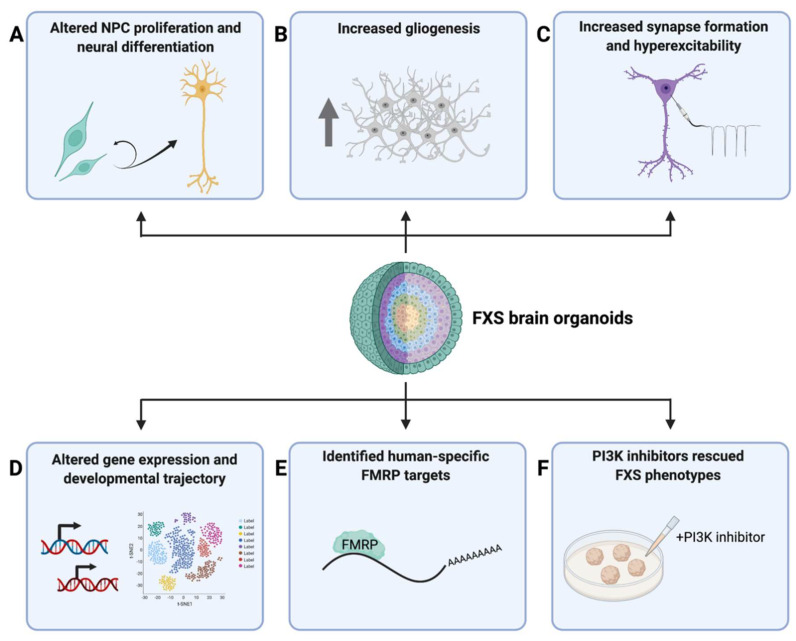Figure 2.
Summary of major findings from 3D FXS−iPSC−derived models. (A) FXS-iPSC-derived forebrain organoids exhibited altered NPC proliferation and neural differentiation [21,22]. In particular, increased NPC proliferation was observed at differentiation day 28 [21], while reduced NPC proliferation and accelerated neural differentiation were observed at day 56 [22], suggesting a developmental-stage-specific alteration in NPC proliferation rate. (B) Increased gliogenesis was observed in FMRP-KO cerebral organoids [24]. (C) FXS-iPSC-derived forebrain organoids showed increased synapse formation and hyperexcitability at differentiation day 56 [22]. (D) Transcriptome analysis revealed alterations in gene expression profile and cell-type-specific developmental trajectory in FXS-iPSC-derived forebrain organoids [21,22]. (E) Using human forebrain organoid models, a large number of human-specific FMRP targets were identified via eCLIP-seq [22]. (F) PI3K inhibitors were able to rescue FXS phenotypes in forebrain organoids [22].

